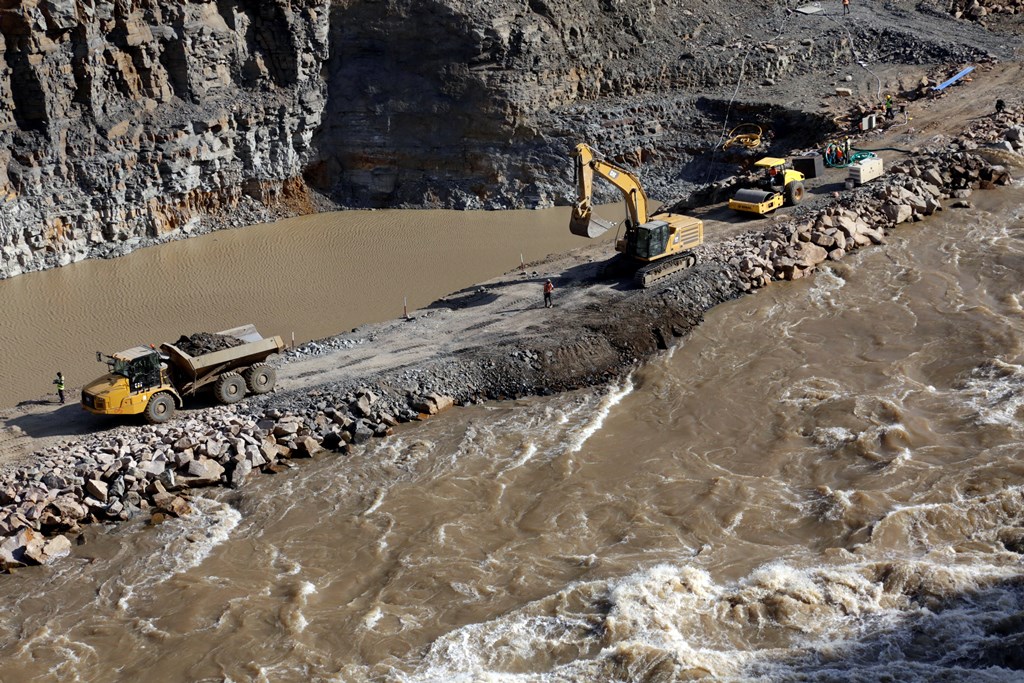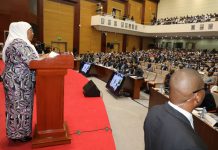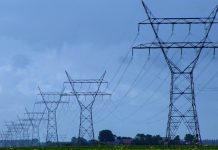AfricaPress-Tanzania: THE construction of the country’s landmark Julius Nyerere Hydro Power Project (JNHPP) is on the right course as the execution of all its eight stages is impressive.
Speaking to reporters who toured the project over the weekend, Project Engineer Mushubila Kamuhabwa said the eight project stages are vital as they go concurrently for smooth project implementation.
According to Engineer Kamuhabwa, the eight stages include the construction of diversion tunnel, power house, switch yard, power intake, access roads and bridges, four saddle dams and mining of limestones for concrete making.
“This project consists of multiple small projects, all of which are at different stages of implementation. All these multiple projects form one mega project that will produce 2,115 megawatts,” engineer Kamuhabwa said.
He added: “As you can see, engineers and technicians are on the sites and the pace at which tasks are being carried out is fast as is required.”
He said the best part of the project is that it has begun stimulating economic activities of the country due to its positive multiplier effects.
“When we were pouring concrete mortar building the diversion tunnel, more than 200 tonnes of steel rods were used, meaning that the project benefits our industries as well,” he added.
According to engineer Kamuhabwa, a substantial amount of cement was also used and is still being used in the project, contributing immensely to performance of cement industries in terms of sales.
Residents living near the project site are also benefiting as the project requires other supporting infrastructures such as power and access roads, all of which pass through some villages.
Giving an example, Engineer Kamuhabwa said power brought to the construction site at Selous was tapped from Morogoro and passed through a number of villages.
On top of that, he said, about 4,000 Tanzanian youths from areas near the project have been indirectly or directly employed, earning them a living.
“We hope the number of Tanzanians participating in the project will increase to 6,000 when the implementation of the undertaking reaches its peak,” said Eng Kamuhabwa.
Residents from Kisaki Village, located as far as 60 kilometres away from the project site, have congratulated President John Magufuli for his implementation of the flagship project, saying they have started witnessing its benefits.
“Kisaki Village is now prospering. I believe by the time this project comes to an end, our village will have recorded tremendous social economic achievements,” said Ali Matumbo, a resident of Kisaki Village in Mvuha District.
He said as a result of the project , a kilogramme of rice is now trading at 1,600/- in the village as opposed the past when the same amount of rice was selling at between 500/- and 1,000/-.
“Our village has been supplied power, including our school, thanks to President Magufuli for executing this mega project,” Mr Matumbo who was in a jovial mood said.
Ms Asha Said, also a resident of Kisaki Village, said she was pretty sure that the road from Morogoro to her village will now be built. On his part, Mr Hassan Mohammed Ngozi said he hopes to see his Kisaki village being face lifted.
Julius Nyerere Hydro Power Project is one of the country’s flagship projects implemented by the fifth phase government under President Magufuli.
Since Tanzania is now a middle income country, the project will make it possible for the nation to produce affordable and reliable electricity to consolidate the implementation of an industrialisation drive.
The project is expected to be complete in June 2022.







